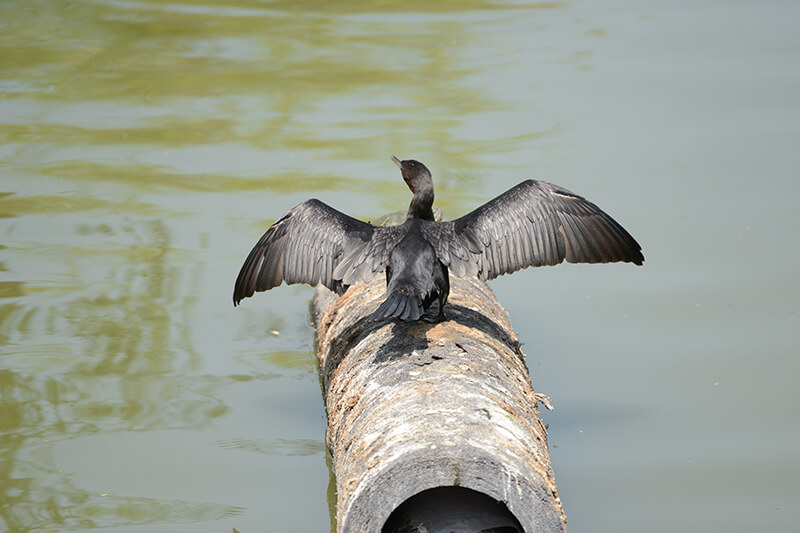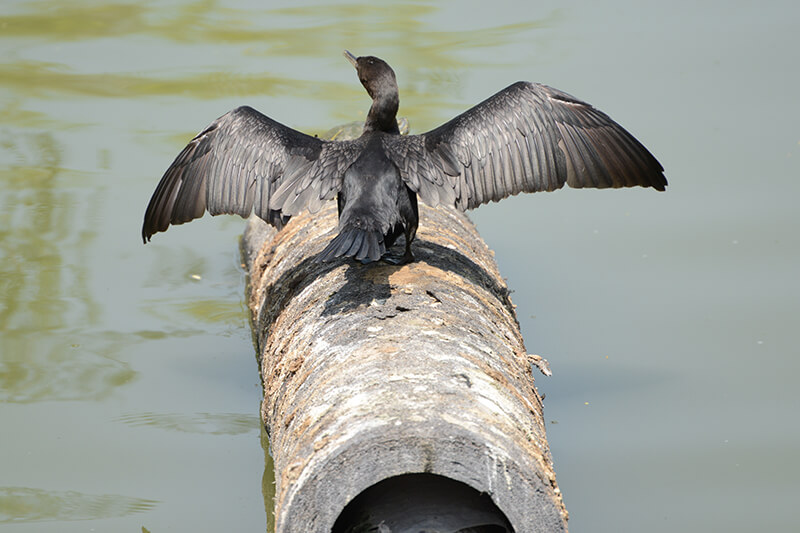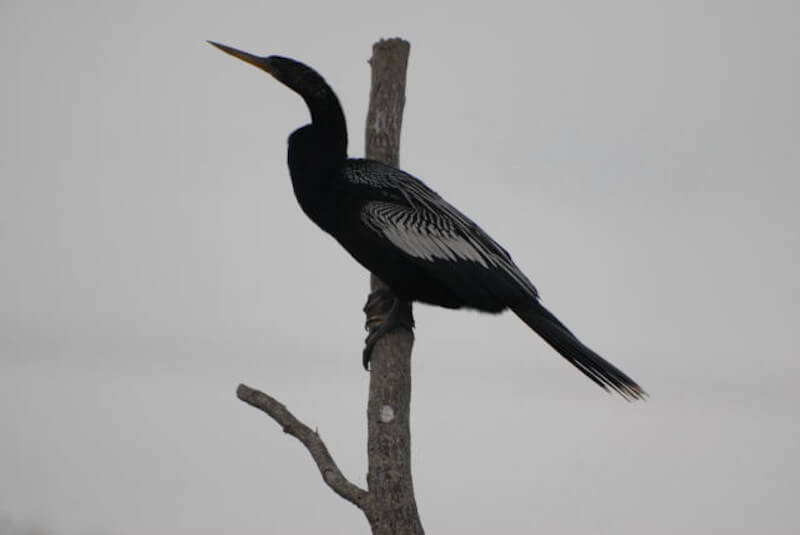anhinga does not have waterproof feathers
EL Pato Aguja americano no tiene glándulas sebaceas en las alas
Anhinga anhinga
The anhinga is a large inky black bird also called snake bird or turkey bird. Its length is of about 0.9 m (3 ft ), a long S-shaped neck and long pointed bill. It can be found in freshwater ponds and swamps where there is thick vegetation and tall trees. The male has grayish-black feathers with a greenish shine. Its large wings have a cluster of silver-white feathers on their upper sides. The female has a tan head, neck, and chest, and a black belly. Both the male and the female have long, fan-shaped tail feathers like a turkey. The anhinga has poorly developed oil glands, and its feathers aren't as waterproof as the feathers of other water birds. It regally perches in a tree with its wings wide open to dry its feathers and warm its body. During breeding season, the male's blood-red eyes are surrounded by a bright blue patch of skin. Females are distinguishable by their buff-tan neck. This bird stealthily swims through a lake with only a snakelike head poking above the surface. The reason being in that their feathers are less water resistant than other birds helps them swim underwater and hunt for food. It captures fish, shrimp, crayfish, amphibians, and snakes with its daggerlike bill. They build their nest in trees along the shores.
La anhinga es una ave grande que alcanza a medir hasta 1 metro de longitud. Tiene una nuca larga en forma de S y un pico largo y puntudo. Se la encuentra en lagos, ciénegas y otros sitios pantanosos con vegetación y árboles altos. El macho presenta plumage negro intense con un tinte verdoso brillante. En la parte superior de sus alas se nota plumas color plateado. La hembra tiene cabeza de color parduzco y con nuca, pecho y abdomen negro. Ambos sexos tienen plumaje en su cola que se abren como las de un pavo. La anhinga no tiene glándulas sebáceas tan desarrollladas como las de otras aves. Por lo tanto, pueden nadar mejor porque tienen menos resistencia al agua y pueden lograr su alimento de una manera más efectiva. Se alimentan de peces, crustáceos, serpientes y anfibios los cuales atrapa o arponea fácilmente con su pico en forma de un puñal. Al nadar solamente sacan su cabeza simulando una serpiente. Pueden permanecer bajo el agua por mucho tiempo. Perchan en árboles o en ramas descubiertas abriendo sus alas para secar sus plumas al el sol y absorber energia. Asi pueden compensar su baja producción de calor metabólico y alta pérdida de calor.

_LAM0729-2

_LAM0729-2a

Estero
